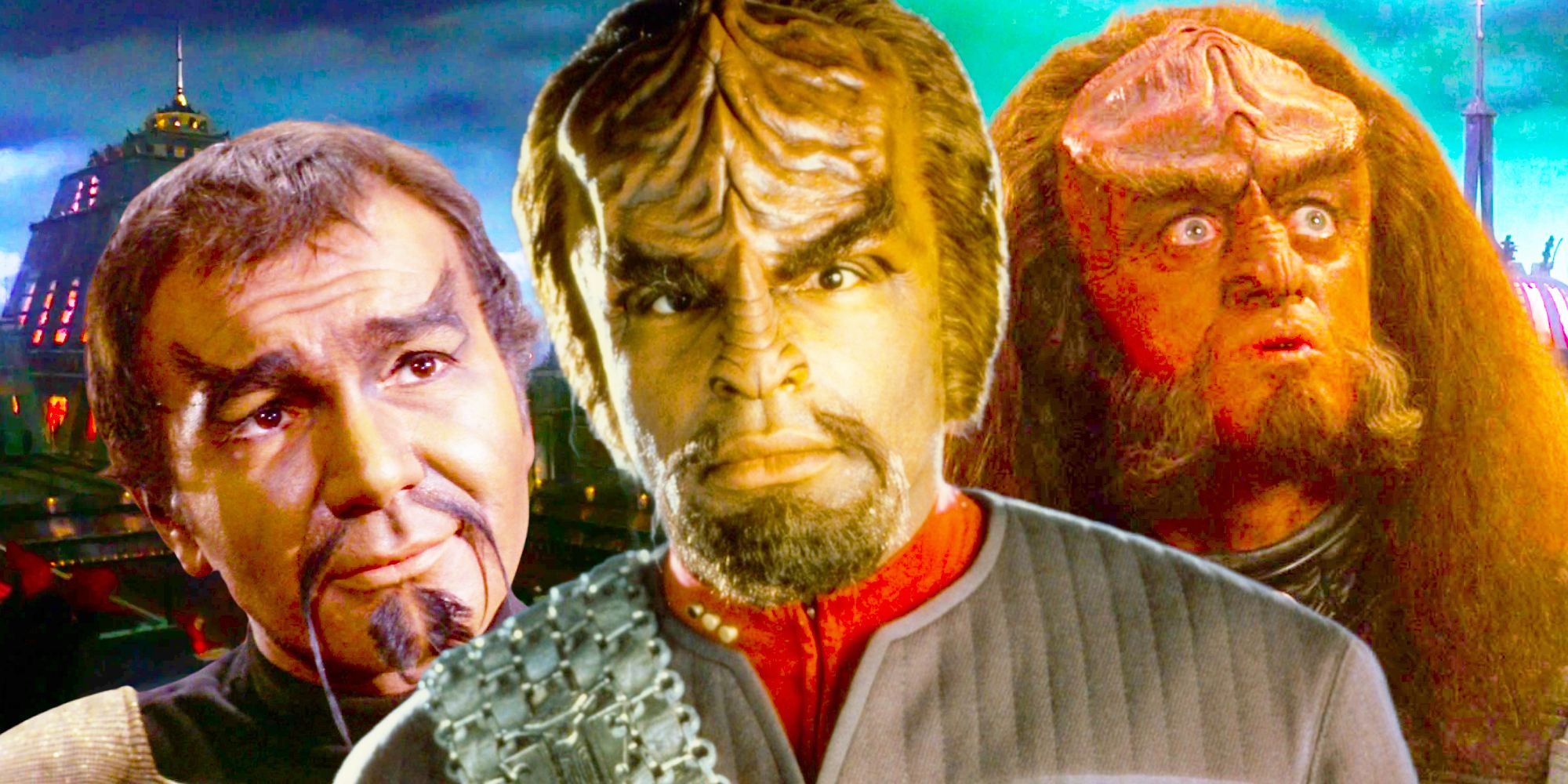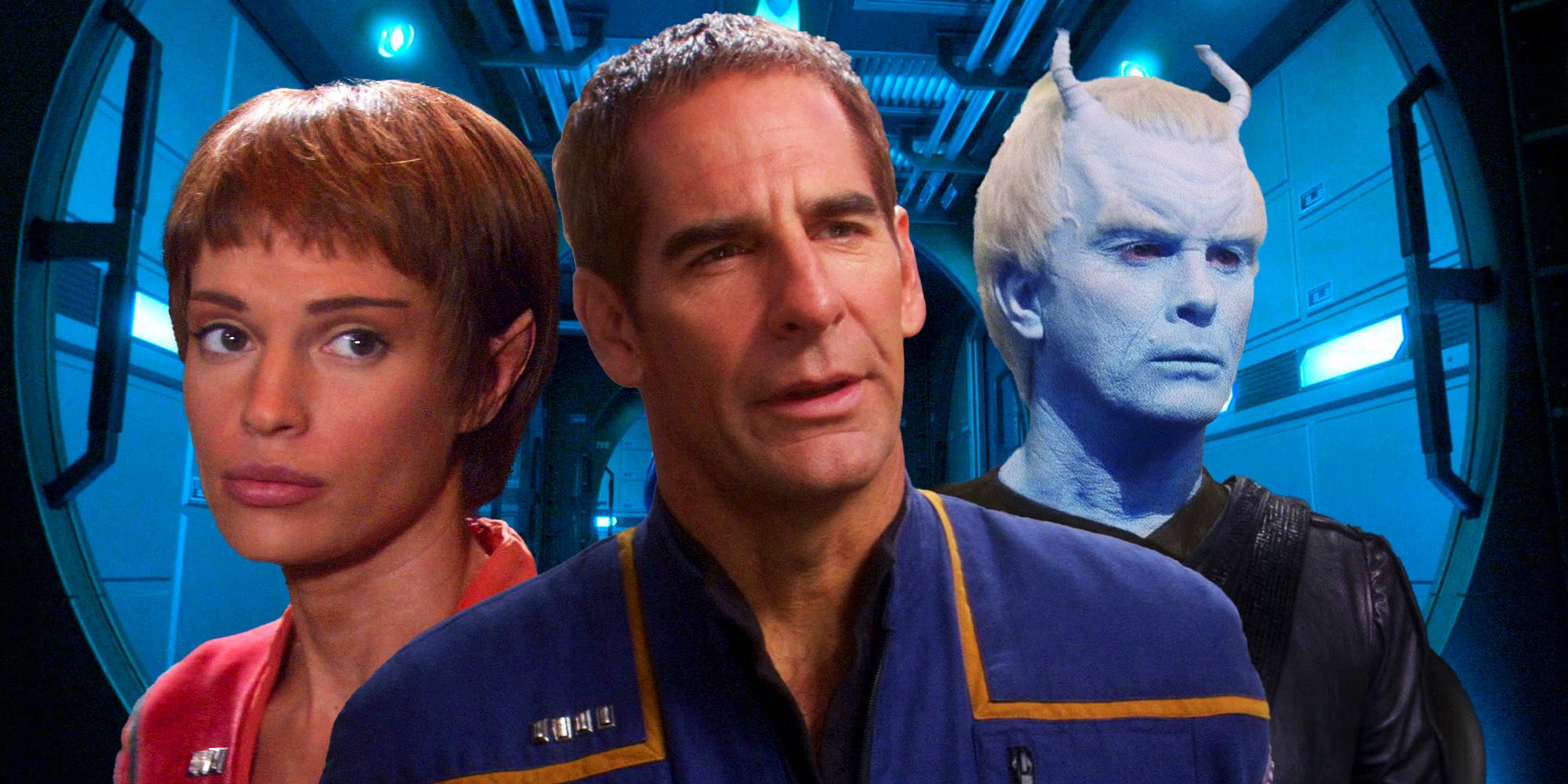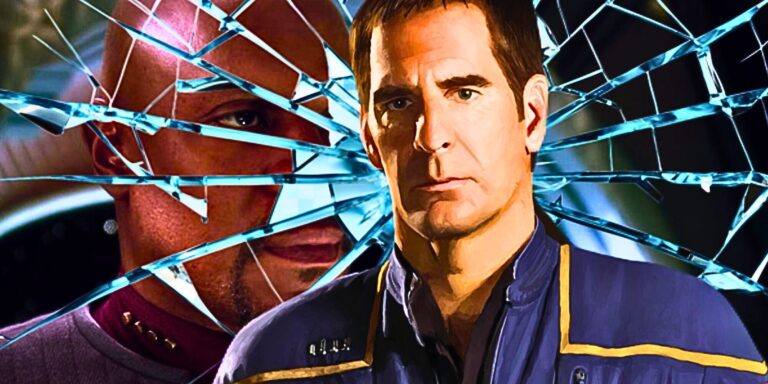Star Trek: Deep Space Nine made a joke in 1996 that poked enjoyable on the franchise’s previous, however an episode of Star Trek: Enterprise got here alongside and addressed the identical difficulty way more totally eight years later. Of all of the Star Trek TV shows, Enterprise‘s main setting is the furthest prior to now. The Star Trek timeline does not start with Enterprise, however it does boast probably the most detailed take a look at the franchise’s twenty second century. Because of its premise, the present is burdened with upholding years of painstaking worldbuilding whereas additionally making worthwhile contributions to the canon.
The Star Trek: Enterprise cast was led by Scott Bakula as Captain Jonathon Archer. Because the commanding officer of Starfleet’s first ship to fly underneath the title of Enterprise, Archer was retroactively put in as probably the most pivotal figures in Star Trek historical past. Though the present had its critics, there have been additionally those that praised Enterprise‘s efforts to flesh out uncared for items of lore and under-addressed plot holes within the bigger saga. It typically tried to keep away from retcons at each flip, however the present merely could not resist offering a canonical rationalization for one of many franchise’s greatest modifications.
Star Trek: Enterprise’s “Affliction” Two-Parter Provides Too A lot Context To Worf’s Klingon Non-Rationalization In DS9
Worf gives little or no details about his smooth-headed counterparts
Star Trek: Deep Area 9 season 5, episode 6, “Trials and Tribble-ations” pays tribute to an iconic episode of Star Trek: The Authentic Collection known as “The Bother with Tribbles.” Whereas it is nice to see the Deep Space Nine cast journey again in time to such a legendary period, the presence of Michael Dorn’s Klingon character, Worf, complicates issues. The bodily look of Klingons had modified drastically since The Authentic Collection, so the members of the alien race that appeared within the episode’s archive footage principally simply look human, missing the distinguished cranial ridges and flowing locks.
Star Trek: Enterprise season 4’s “Affliction” two-parter undercuts the joke by basically canonizing the seemingly wild theories put ahead by Worf’s colleagues.
Worf is left to clarify the behind-the-scenes quirk to his Twenty fourth-century colleagues once they all flip to him in confusion aboard the ship of William Shatner’s Captain James T. Kirk. Amusingly, Worf merely says it’s a “lengthy story,” and that Klingons do not “focus on it with outsiders.” It is a enjoyable and meta second that faucets fairly aggressively on the fourth wall, however Star Trek: Enterprise season 4’s “Affliction” two-parter undercuts the joke by basically canonizing the seemingly wild theories put ahead by Worf’s colleagues.
Prospects put ahead in “Trials and Tribble-ations” are “genetic engineering” and a “viral mutation,” neither of which is confirmed or denied by Worf’s character. Enterprise finally proves a mix of each solutions to be true. After a gaggle of Klingons attempt to increase themselves with human DNA, the experiment goes horribly incorrect and causes deaths. It additionally turns into viral amongst Klingons, and Dr. Phlox (John Billingsley) formulates a remedy based mostly on the unique virus. As a facet impact, it removes the recipient’s distinctive cranial ridges on the genetic degree.
The Options For Star Trek: Enterprise’s Klingons Weren’t Best
Enterprise had restricted choices if it needed to make use of Klingons
Star Trek: Enterprise did not essentially want to incorporate Klingons. That being mentioned, the race’s recognition amongst Trekkies meant it might have been an enormous disgrace if the warrior race had been omitted from the Star Trek prequel present. So, the choice was made to incorporate them, and as a direct outcome, Enterprise needed to tackle the disparity in how Klingons look in The Authentic Collection and later spinoffs. The present selected the sci-fi route and supplied an in depth canonical rationalization. There have been those that disliked it, however different choices would not have labored.
If the change occurred earlier than the occasions of Enterprise, followers might have been left equally at midnight as if the Klingons hadn’t been included in any respect.
The primary different would have been for Star Trek: Enterprise-era Klingons to have {smooth} foreheads like their Authentic Collection counterparts. The difficulty with that is that it might imply no matter brought on the change occurred both earlier than Enterprise or after. So, an evidence would not have been supplied. Plus, the change occurring after Enterprise would have raised the potential of Klingons’ cranial ridges not being a part of the race’s pure kind. If the change occurred earlier than the occasions of Enterprise, followers might have been left equally at midnight as if the Klingons hadn’t been included in any respect.
Why Star Trek: Enterprise’s Klingon Rationalization In “Affliction” Nonetheless Works
The franchise’s twenty second century supplied a much-needed (& sensible) Star Trek rationalization
“Affliction” is not an ideal strategy to rectify Star Trek‘s Klingon canon, however it’s nonetheless most likely the very best avenue Enterprise might have explored. As an alternative of simply ignoring the design change, Star Trek: Enterprise immediately confronts the matter and even builds a complete story across the introduction to franchise lore. Plus, it is a totally fascinating and inventive strategy to remedy an uncommon downside. If “Affliction” hadn’t answered the massive Klingon query, it might have made the Klingons’ function in The Authentic Collection a bit too bizarre.
The character of the remedy means the lack of the recipient’s ridges turns into genetic and is handed on to the following technology of affected Klingons – which explains the human-looking Klingons in Star Trek: The Authentic Collection.
Moreover, “Affliction” offers an evidence that sits very comfortably and respectfully inside Star Trek continuity. The episodes by no means state that each single Klingon loses their cranial ridges. As an alternative, it is a group of “tens of millions” who’re given Phlox’s remedy after being uncovered to the Klingon Augments’ virus. The character of the remedy means the lack of the recipient’s ridges turns into genetic and is handed on to the following technology of affected Klingons – which explains the human-looking Klingons in Star Trek: The Original Series. In different phrases, there have been nonetheless ridged Klingons throughout Kirk’s period, they only by no means appeared onscreen.

Associated
Star Trek’s 10 Greatest Klingons
Star Trek has many nice Klingon characters from Kor to Worf and Kruge to Torres. However who’re the very best Klingon warriors that Qo’noS has to supply?
Moreover, “Affliction” raises the problem of ridge-less Klingons being regarded down upon by these unaffected by the virus. This offers an fascinating perception into Klingon society. Plus, the implied introduction of “cranial reconstruction” surgical procedure goes an extended strategy to explaining how the race was in a position to seemingly bounce again so rapidly from such a widespread occasion. In brief, a few of the Klingons who’ve appeared of their extra recognizable kind might have acquired such a process to right their look.
Star Trek: Discovery’s Klingon Design Change Was Approach Worse Than Enterprise’s
The Klingons turned one of many greatest speaking factors at the beginning of Star Trek’s fashionable period
Star Trek: Discovery introduced the franchise again to TV screens 12 years after Star Trek: Enterprise ended. When the area opera’s fashionable period started, it got here with a contemporary new aesthetic and overhauled sensible and particular results. One of many design selections made for Discovery was revisiting the bodily look of the Klingon race. Though the modifications had been arguably in line with the remainder of Discovery‘s new type, enormous parts of the Star Trek fan base admonished the Klingons’ new look. Whereas “Affliction” was straddling two pre-established Klingon designs, Discovery rebuilt them utterly.

Associated
Star Trek: Enterprise’s 20 Best Episodes, Ranked
Star Trek: Enterprise’s 20 greatest episodes use darker themes and ethical ambiguity as Captain Jonathan Archer and crew discover the celebs.
After Star Trek: The Authentic Collection, the franchise settled on the Klingons’ look, and Discovery ignored that. The brand new variations of the aliens nearly regarded like a very completely different species. In addition they acted extra intensely, however that was a results of writing selections and the present’s newfound grittiness. Finally, the present did form of return the Klingons to their authentic kind, however offscreen. It was revealed the bald Klingons had began to regrow their hair, which might have returned them nearer to the looks of the Klingons in traditional reveals like Star Trek: Deep Area 9 and Star Trek: Enterprise.

